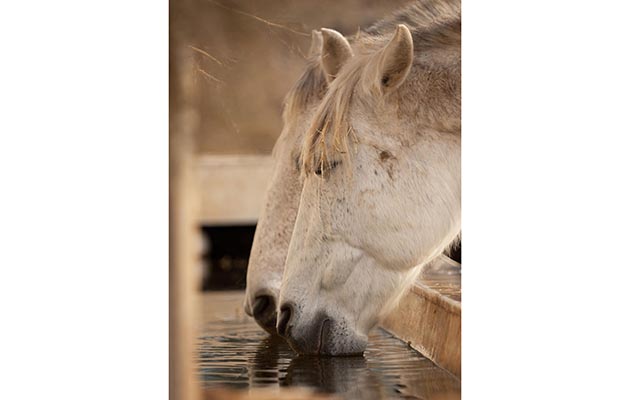More than 600 outbreaks of strangles are diagnosed in the UK each year, according to a recent report from Newmarket’s Animal Health Trust (AHT), making it one of the most frequently identified infectious diseases of horses worldwide.
Strangles is not a notifiable disease in Britain, so outbreaks do not have to be reported to the government. Nor is there any legal requirement for quarantine restrictions to be put in place.
There can be serious welfare concerns for affected horses, along with considerable
financial and time-consuming consequences for any affected yard. Yet this is a disease that only rarely affects people. Looking atthe bigger picture, strangles is not considered of sufficient significant national importance for the government to become involved.
Essentially, this means that horse owners and the veterinary profession must work together to “break the strangles hold”, as the AHT puts it so effectively.
The good news is that vets are making progress towards eradicating strangles. Research by scientists at the Swedish University of Agricultural Sciences, the country’s Karolinska Institute, the AHT and elsewhere has resulted in a new protein-based vaccine that may soon become available. Together with clearer understanding of the disease, including DNA analysis of different strains, this should enhance equine health in the coming years.
The AHT recently organised a key research review workshop, while the American College of Veterinary Internal Medicine has released a revised consensus statement to replace previous guidelines issued in 2005.
Drawn up by a worldwide expert veterinary panel, the statement is aimed at vets, but has been made accessible to all — as any increase in awareness to reduce this global problem is worthwhile. It is available online (see right) and is worth a read.
Protocols to manage ongoing infection can be tedious and prolonged, involving the closing of yards, a range of tests and the separation of horses into groups, depending on their risk. It is far better to focus on prevention to lessen the effects of the disease on horses and the financial and emotional costs to owners.

Strangles: what you need to know
- Strangles is an infection of the upper respiratory tract, caused by the bacteria Streptococcus equi. The disease will kill around one in 100.
- An infected horse will usually develop a fever, followed by lymph node abscesses around the head and neck area. Some horses show milder signs. If a horse is isolated as soon as he develops a raised temperature, this will reduce the risk of spread.
- Most horses will “shed” bacteria for two to three weeks from nasal discharge or burst abscesses. Horses may be infectious for at least six weeks after this discharge of pus has dried up, but around one in 10 cases will have a persistent guttural pouch infection. This means they remain carriers and will intermittently shed strangles bacteria, despite appearing perfectly well.
- Transmission from seemingly healthy carrier horses is as much of a problem — or possibly more so — than spread from those who look ill and are discharging pus. In short, this means that any horse must be considered a potential risk.
- Effective strangles control measures involve detection, segregation and treatment of carrier animals to prevent new outbreaks.
- Limiting exposure has to be the best method to prevent strangles, although appropriate quarantine can be challenging at yards where there is frequent movement of horses during breeding, racing or show seasons. Sensible biosecurity measures should include good yard hygiene and the separation and screening of all new arrivals for three weeks. If there is an outbreak, it is wise to isolate infected animals until they are confirmed as clear by the vet.
- The bacteria that cause strangles can linger in water for four to six weeks. This highlights the risk of horses drinking from a shared water trough, where a carrier can shed millions of bacteria and easily infect others.
- Antibiotics can benefit some severe cases, but should not be used as a preventative measure and may be unnecessary in many situations.
Ref: Horse & Hound; 5 April 2018


